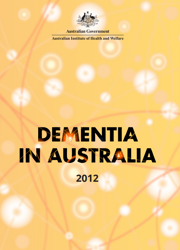Related material
Resources
Latest related reports
-
Dementia in Australia
Web report |
-
Dementia in Australia Summary report 2022
Publication |
-
Dementia in Australia: 2021 Summary report
Publication |
-
Dementia data gaps and opportunities
Publication |
-
Hospital care for people with dementia 2016–17
Publication |



